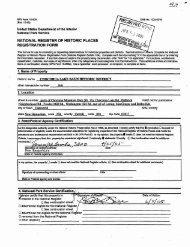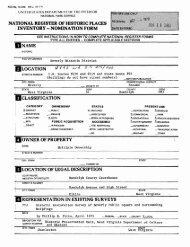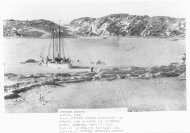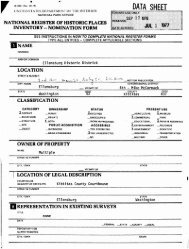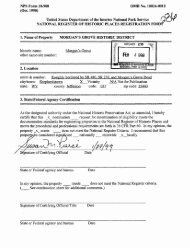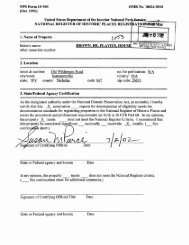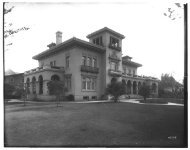National Register of Historic Places Registration Form
National Register of Historic Places Registration Form
National Register of Historic Places Registration Form
You also want an ePaper? Increase the reach of your titles
YUMPU automatically turns print PDFs into web optimized ePapers that Google loves.
NPS <strong>Form</strong> 10-900-a OMB Approval No. 1024-0018<br />
;c (Ellen Marsh, "Getting to know your Early Twentieth-Century Neighborhood,"<br />
Conserve Neighborhoods, Special Issue; <strong>National</strong> Trust for <strong>Historic</strong><br />
Preservation, July/August, 1982) John Sherman was a more paternalistic<br />
developer. He hired the architects and took pride in the design <strong>of</strong> the<br />
houses. He also provided amenities for the residents. After the construction<br />
<strong>of</strong> only eight houses, he had a Waiting Shed built on Connecticut Avenue so<br />
that residents would not get wet while awaiting the streetcar. He eventually<br />
replaced this simple structure with a stone Lodge which was not only a waiting<br />
station but also a community center. In addition he provided a Chemical<br />
Engine House, with space for the police, on Newark Street, and a stable for<br />
horses and carriages which was located below Macomb Street near Klingle Road.<br />
He selected local architects to design the houses for the Cleveland Park<br />
Company. Paul Pelz, one <strong>of</strong> the architects <strong>of</strong> the Library <strong>of</strong> Congress; Waddy<br />
Wood, who later designed the Woodrow Wilson house; Frederick Bennett Pyle, a<br />
prolific commercial and residential architect; and Robert Thompson Head,<br />
whose numerous houses give the neighborhood an appearance <strong>of</strong> great<br />
architectural variety, designed houses for the Cleveland Park Company between<br />
1895 and 1901. It is the houses designed by these architects which set the<br />
tone for the neighborhood and established its architectural character and<br />
distinctiveness.<br />
John Sherman took pride in the fact that his houses were individually<br />
designed: "...among the sixty houses <strong>of</strong> the Park, with a single exception,<br />
there is no repetition <strong>of</strong> design." "Cleveland Park has not one home that is<br />
unpleasant or unsightly. The houses have been built in the last six years and<br />
planned by architects who combined in them beauty, durability and economy."<br />
These attractive homes we <strong>of</strong>fer have all been planned and designed specially



